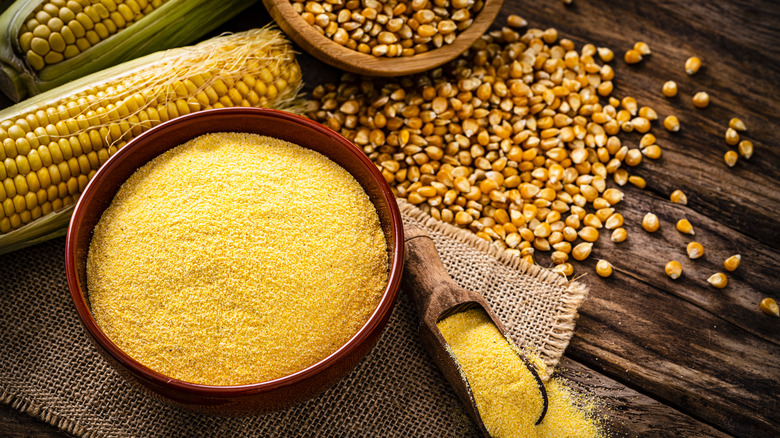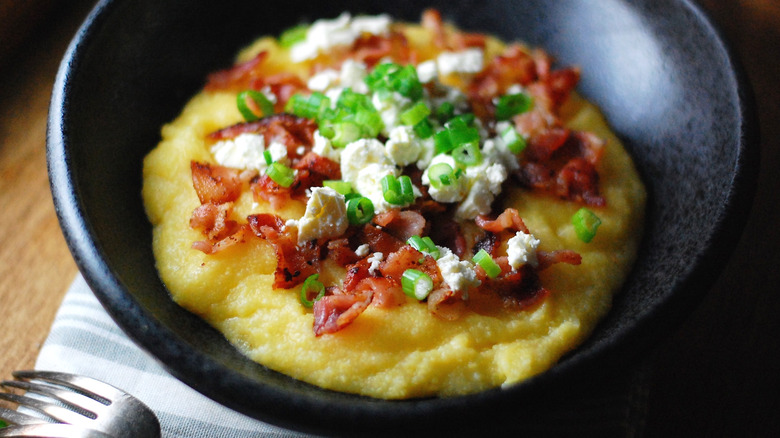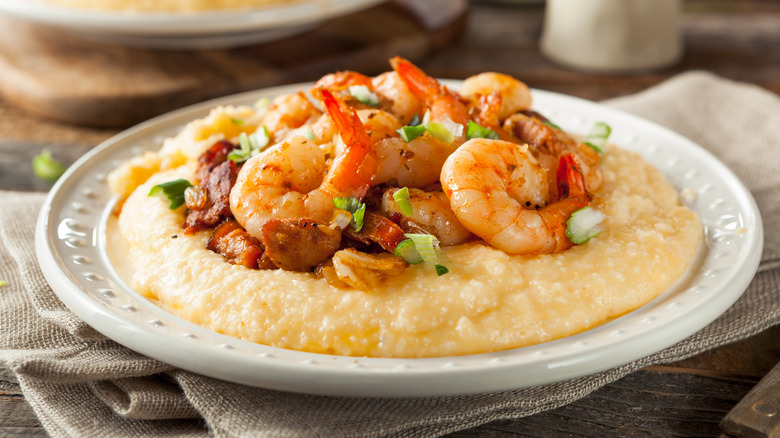Skip The Water For A Richer Bowl Of Grits
Grits, a treasured Southern culinary tradition, hold a special place in the hearts of many for its comforting and versatile nature. These coarsely ground kernels of corn have been a staple in Southern cuisine for generations. Adaptable to all types of seasonings and toppings, grits can be served for every meal of the day as the main attraction or as a side dish.
While traditionally cooked with water, grits cooked with milk and cream create a much more delicious outcome. Grits cooked in milk and cream gain a luxurious creaminess that is nothing short of indulgent. The richness of dairy elevates the overall texture, making each bite velvety and smooth. The inherent sweetness of milk and cream also amplifies the natural sweetness of the corn, resulting in a more well-rounded and balanced taste. The creaminess of milk and cream envelops the grits, creating a canvas for additional flavors and ingredients.
Cooking grits with cream and milk
Making grits with milk and cream is a pretty straightforward process. Start by choosing high-quality stone-ground grits, milk, heavy cream or half-and-half. For every part of grits, use a combination of one part of milk and another part of heavy cream or half-and-half. This balance ensures both creaminess and richness without burdening the result with overwhelming heaviness.
In a saucepan, combine the milk and cream. Heat the mixture over medium heat until it reaches a gentle simmer. Slowly whisk the stone-ground grits into the simmering liquid. Doing so gradually prevents clumping and ensures a smooth consistency. Reduce the heat to low and continue stirring the grits to avoid sticking. Let them cook until they have absorbed the liquid and achieved the desired creamy consistency. Season the grits with salt, ground pepper, and other seasonings to taste. Once the grits have reached the desired texture and flavor, they are ready to be served.
Add extra flavor to creamy grits
While milk and cream contribute significantly to the enhancement of grits, there is always room to elevate the dish with additional complementary ingredients. For instance, stirring in different cheeses, such as cheddar, parmesan, or even blue cheese, can create distinct flavors that would make your grits a fantastic side dish. Herbs such as chives, parsley, rosemary, and thyme give the grits a hint of savory freshness, while spices such as cayenne pepper provide some heat.
You can also turn your grits from a side dish to a main attraction by pairing them with various foods. Try spooning sauteed mushrooms and a couple of barely poached eggs on top of grits and drizzle with truffle oil for a bowl of grits that have been given the Italian polenta treatment. Pan-roasted jumbo shrimp or redfish filets with Old Bay seasoning and lots of butter can be paired with cheddar cheese-infused grits for a southern-style seafood feast. For vegetarians, charbroiled jumbo asparagus and portobello mushrooms with garlic-infused olive oil make for a satisfying main course when accompanied with grits mixed with gorgonzola cheese, while carnivores would be delighted with creamy grits served with red wine braised short ribs.



